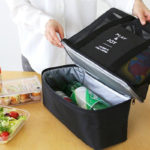Planning to travel and don't know how to store your groceries on the go? Or are you going to have a picnic, outing or camping trip? Or maybe a trip to a country house where there is no refrigerator? In such a situation, a thermal bag can really help you out, keep you fresh and extend the shelf life of your food. In this article we will answer the question: how to choose the right cooler bag so that the purchase is really worthwhile and useful for you.
Types of cooler bags
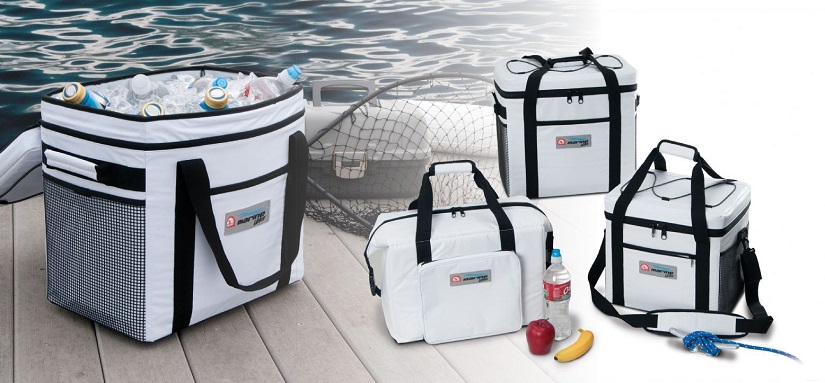
Cooler bags are very different. And when you come to the store, it is difficult to immediately correctly determine which model is needed. The main difference is the capacity and the thickness of the insulating layer of the bags. That is why, all cooler bags can be divided into:
- Thermal bags - products mainly made of dense fabrics with a thin isolayer, differ in a small volume - from 300-400 g to 2-3 liters;
- Thermal containers - have a rigid frame and a reinforced thermal layer, volume - from 3 liters, made in the form of backpacks, suitcases on wheels, voluminous portable bags;
- car refrigerators - roomy boxes for transportation in the trunk of a car, are connected to the car battery and keep the cold for a long time.
In fact, it is worth considering the fact that the thermal capacity, unlike a car refrigerator, does not generate, but only maintains the cold. That is, the bag itself does not freeze food, but only keeps the inside temperature low. Therefore, calling a bag a refrigerator is not too correct, however, this common name has firmly stuck to such a relatively new accessory. All products and the container itself must be refrigerated or frozen before use - for better and longer preservation.
Depending on the thickness of the thermal layer and the volume of the bag itself, the cold inside can persist for 2-3 hours or for a longer period - up to 20 hours or longer. Heat exchange between the internal content and the environment still occurs. But the thicker the isolayer, the slower the heating occurs. Based on this fact, thermal containers with a layer thickness of 0.8 mm and higher are most effective.
See also:
- 7 best Bosch refrigerators according to customer reviews
- 8 Best Samsung Refrigerators According to Buyers
- 9 Best Inexpensive Refrigerators According to Buyers
- 10 best LG refrigerators according to customer reviews
Design and volumes
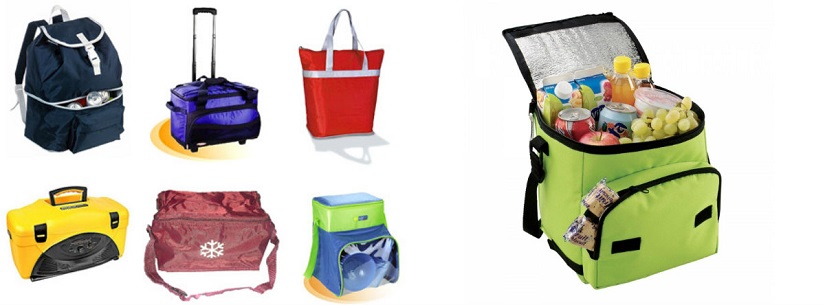
How the thermal bag will look is up to you. Today, manufacturers produce all sorts of models of such an accessory - in the form of small lunch boxes, portable bags, backpacks, containers, etc. You can also choose any color you like. You can choose a thermo bag in restrained colors or vice versa - take a colorful and bright one so that it immediately catches your eye.
However, be sure to pay attention to the convenience of transportation - the thermal container must have strong and reliable handles, a zip fastener covered with a Velcro flap.
To find a model that is suitable in terms of volume, you must consider how many people you need to store products. The larger the company, the more spacious your cooler bag should be. If you are buying a small container for a student or office worker, pay attention to the small thermo boxes, which can hold just a couple of sandwiches or a light snack. Take food with you on a trip to an ordinary family of 3-4 people - choose a thermal capacity of 4-5 liters. If you are traveling with a large company, it is best to take with you a thermo-backpack or a container on wheels with a volume of 8-10 liters.
![]() See also - How does a thermal bag (portable refrigerator) work
See also - How does a thermal bag (portable refrigerator) work
We determine the quality of the material
If you decide to choose a thermal bag, then we advise you to immediately buy a good model from a reliable manufacturer. After all, you are probably familiar with the phrase: "The miser pays twice." A high-quality thermal bag will last you longer and will show itself as effectively as possible - you can really count on the long-term preservation of a low temperature inside.
A high-quality bag will immediately stand out among the one-day models with its sturdy performance. The outer material is dense, durable and water-repellent. For example, nylon, polyester, or polyvinyl chloride. Before buying, be sure to research the quality of the seams - a responsible manufacturer will certainly prove itself with a clear, even stitching and tightly stitched handles.
The inner layer usually consists of a dense reflective material that resembles dense foil. If there is no such coverage in the proposed model, you should think carefully before buying and do not rush to part with the money.
We have already mentioned that the thickness of the thermal layer must exceed 0.8 cm. Otherwise, your bag will be able to keep the cold in the middle for only about 2 hours.
With or without battery?
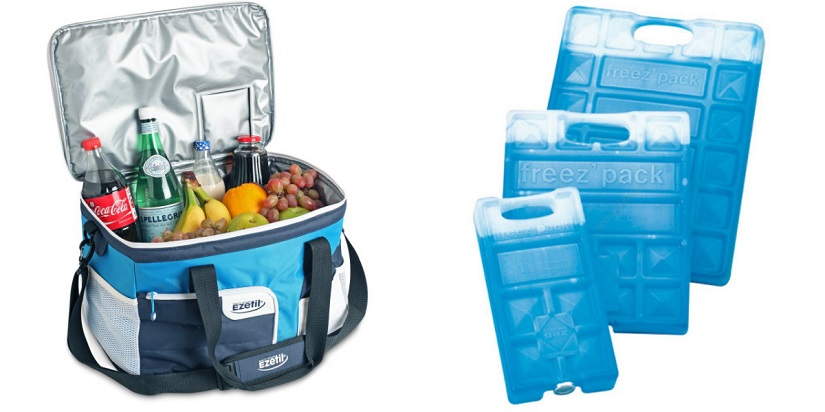
Usually, along with a good thermal bag, cold accumulators are also sold in the kit - small containers with saline solution. If there is no such device in the thermal container, cold accumulators can be purchased separately. Batteries do not freeze, but they are capable of releasing cold during defrosting. It is with the help of batteries that the food inside the thermo bag remains chilled or frozen longer.
Outwardly, the cold accumulator is a flat flask. The filling can be liquid or gel. It is helium cold accumulators that take longer to heat up, but solution ones are much cheaper.
In principle, the life of such a battery is unlimited. Freeze containers in your home refrigerator before loading food. However, if the container with the saline solution is cracked, you should immediately say goodbye to such a battery.
A properly sized salt refrigerant container can maintain temperatures 25 ° C colder than the environment for 18-24 hours. Remember, for 1 liter of food, use 50-60 g of refrigerant in the battery.
Additional equipment
Many modern thermal bags can boast of additional equipment - a set of dishes, special compartments, pockets for bottles, etc. To buy just such a bag or not is everyone's personal business. It is worth considering that a set of plates, forks and glasses may not be useful to you outdoors or in the country, and how often you will use such a service is unknown. But such a bag will cost an order of magnitude more.
Food locks are more practical in this regard. Even if your bag is dropped or turned over, the food inside will not be damaged or fall out.
Useful Tips
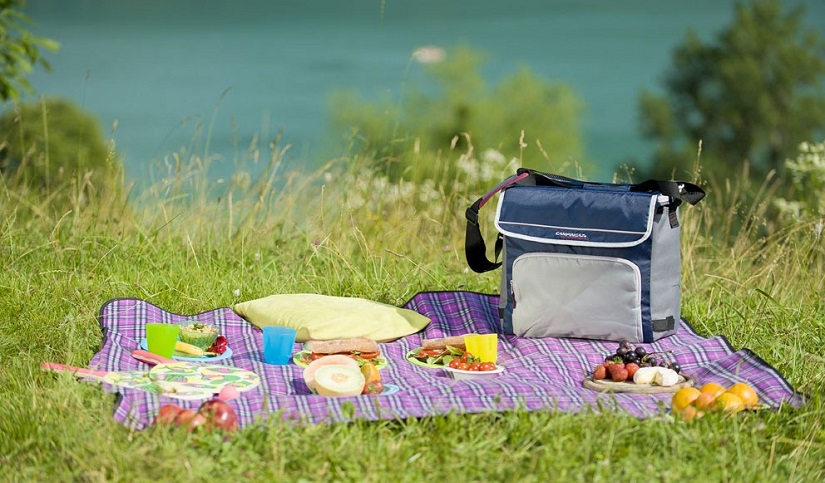
In order to keep the low temperature inside your thermal container as long as possible, you should follow a number of simple recommendations.
- First of all, refrigerate the bag before use. For example, you can put the bag itself in the refrigerator or hold it inside a bottle of frozen water.
- If you use cold storage accumulators, they should also be pre-frozen. This will take you at least 10-12 hours.
- Chill or freeze the required food before serving.
- Stack food very tightly, make sure there are no voids, and do not forget to place a couple of cold accumulators in the middle.
- It is better to transport the thermal container, among other things, if the situation and the size of the bag itself allows. Large car refrigerators should be carried in the trunk of the car.
- The bag should be opened as little as possible, because warm air gets inside and increases the temperature inside the cooler bag. Especially if hot summer reigns on the street, and you brought food for a long picnic.
As you can see, nothing supernatural, but following these simple rules will allow you to extend the life of your portable thermal bag.
Thermal insulating containers and bags are useful not only for picnics, but also in the household. You can take it with you on a trip or on a trip to nature. You can also carry frozen food from the store home in such a bag. And if you need to defrost the refrigerator, just transfer the contents of the freezer to the bag prepared in advance and do not worry about the safety of the food.
We hope that now you know exactly how to choose a cooler bag, what to look for before buying, and how to properly use your new purchase. Be careful when choosing and give yourself a really practical and convenient thermal bag.
See also:
- 10 best Atlant refrigerators according to owner reviews
- 10 best refrigerators from 30,000 to 40,000 rubles according to buyers
- 11 best BEKO refrigerators according to customers' opinion
- 15 best Liebherr refrigerators according to customer reviews

